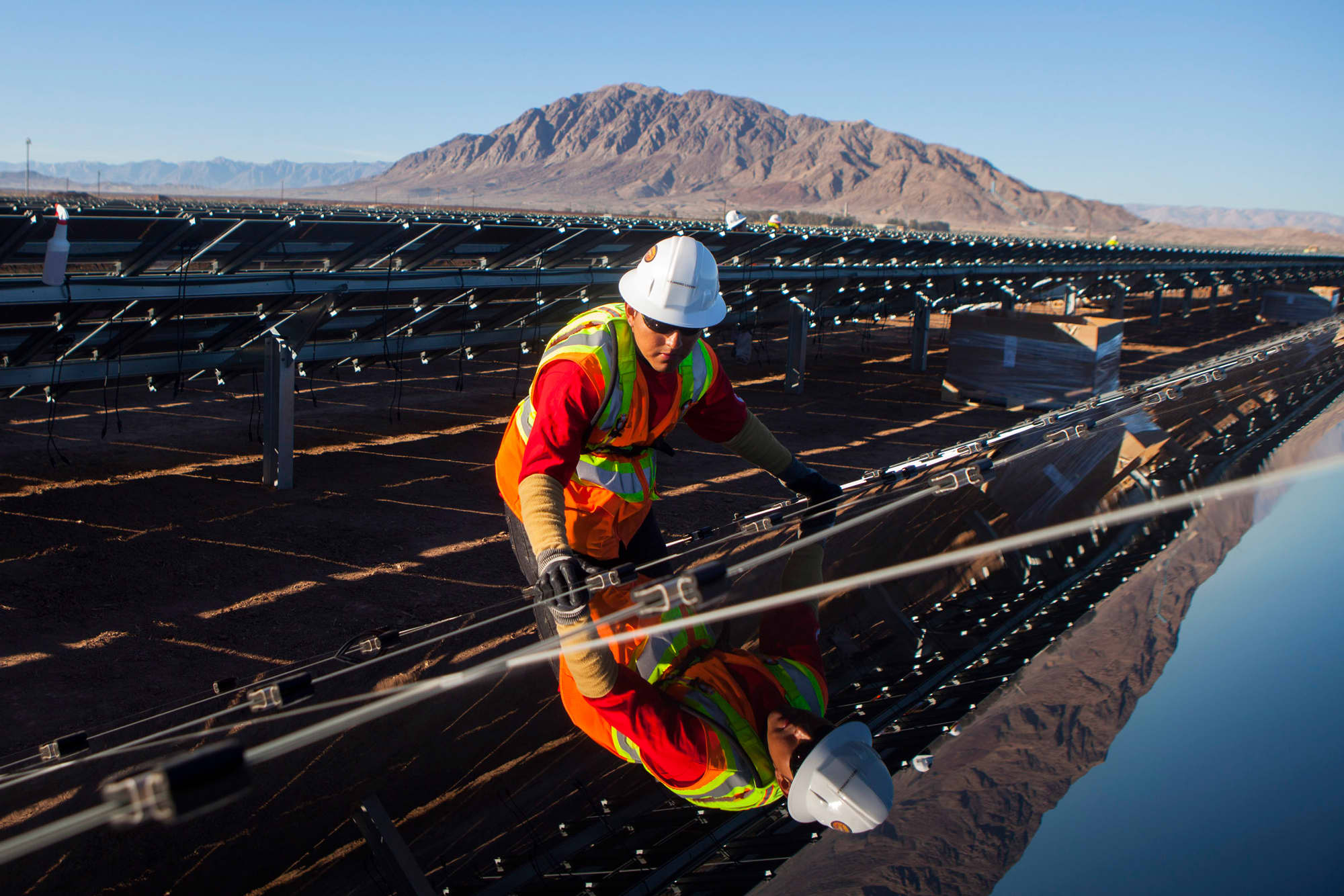Biden extends Trump-era solar tariffs, with several modifications

A contractor for First Solar works on construction of a solar project in Imperial County, California.
Sam Hodgson | Bloomberg | Getty Images
The Biden administration said Friday that it will extend Section 201 tariffs on imported solar cells and panels for another four years, but with several changes to existing provisions.
The tariff rate quota for solar cells will rise from 2.5 gigawatts to 5 gigawatts, and the administration will also uphold the decision to exclude bifacial panels from tariffs. Bifacial panels, which absorb light on both sides, are most common in utility-scale solar projects.
The Solar Energy Industries Association said that while it was “disappointed” with the decision, it “supports” the administration’s efforts to find a middle ground.
“Administration officials arrived at a balanced solution in upholding the exclusion for bifacial panels and increasing the tariff rate quota for cells,” Abigail Ross Hopper, the association’s president and CEO, said in a statement.
The American Clean Power Association said it “applauds” the administration’s decision to exclude bifacial panels from tariffs, while supporting the extension broadly.
“The president’s decision to extend the tariffs, applicable to monofacial solar cells and modules, gives the domestic solar manufacturing industry four more years to adjust to import competition as intended by the statute,” American Clean Power Association CEO Heather Zichal said in a statement.
The Section 201 solar tariffs were announced by former President Donald Trump in January 2018 and went into effect that year. The four-year tariffs were set to lapse on Sunday. The initial tariffs stood at 30%, with a 5% decline each year.
In November, the U.S. International Trade Commission recommended extending the tariffs. The commission said the measures continue “to be necessary to prevent or remedy serious injury” to the domestic industry.
“[T]here is evidence that the domestic industry is making a positive adjustment to import competition,” the commission noted.
But others say the tariffs have done little to jump-start domestic manufacturing. According to Rystad Energy, the tariffs “comprehensively failed.” In December, the firm said the U.S. was on track to import a record 3 gigawatts of solar cells in 2021, up from the 2.5 gigawatts imported in 2019.
Energy research firm Wood Mackenzie noted that solar modules used in U.S. solar projects are 55% more expensive than those in European projects due to layers of tariffs.
The decision comes amid a turbulent time for the industry. Solar stocks have gotten crushed over the last year due to a number of headwinds, including rising raw material costs, supply chain bottlenecks and policy uncertainty. More recently, the group has gotten caught up in a broad rotation out of growth-oriented areas of the market in the face of rising rates.
The Invesco Solar ETF has dropped 20% this year, building on 2021’s 25% decline. Residential installers Sunrun, SunPower and Sunnova are all trading roughly 70% below their 52-week high levels. Enphase is more than 50% off its recent high.
Manufacturer First Solar has held up marginally better, and is 42% below its Nov. 1 52-week high. The company was among those in favor of extending the tariffs.
“First Solar is deeply disappointed in the decision to extend the Section 201 safeguard duties while maintaining the exclusion of bifacial panels,” said First Solar CEO Mark Widmar. “Quite simply, the extension to the Section 201 safeguard excluding bifacial panels is no safeguard at all.”
Samantha Sloan, First Solar’s vice president of policy, said Thursday that solar panel costs make up less than 20% of the levelized cost of electricity for an average utility-scale solar project.
Potential changes to California’s solar subsidy program has also been hanging over the group. On Thursday, the state’s regulator said a decision on the matter has been delayed indefinitely.



